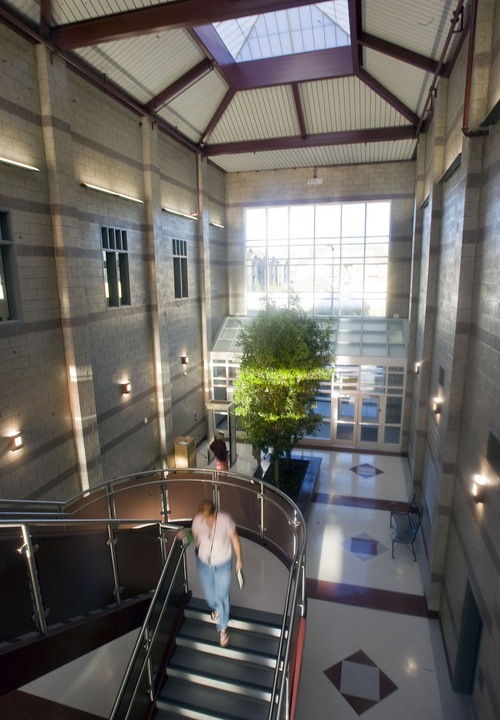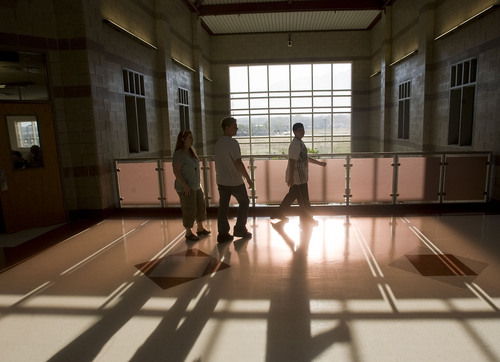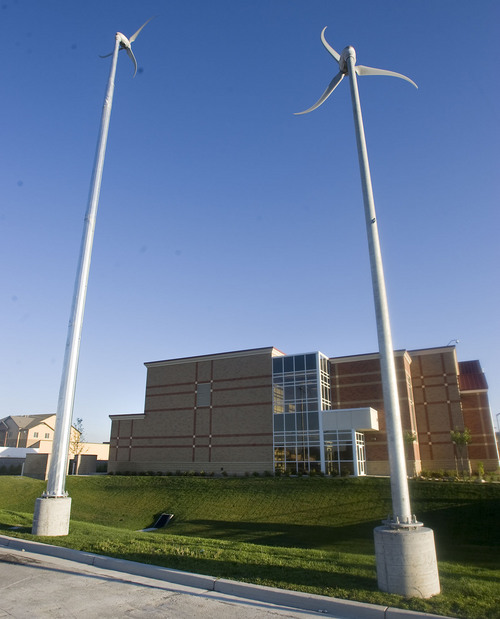This is an archived article that was published on sltrib.com in 2014, and information in the article may be outdated. It is provided only for personal research purposes and may not be reprinted.
Sandy • Many are still grumbling over the Jordan School District split years ago, but leaders of one rapidly growing city are considering splintering the district again.
South Jordan's mayor and several city councilmen met with the mayors of Midvale, Cottonwood Heights and Sandy on Monday evening to ask them about their experiences splitting from Jordan and for their advice. The event was considered a special meeting of the South Jordan City Council, though the body met at Sandy's city hall.
South Jordan Mayor David Alvord cautioned that no decision has yet been made to split, and the meeting was merely to gather information.
But it was clear the possibility is under serious consideration.
South Jordan councilman Steve Barnes said residents are concerned about whether the Jordan district will be able to keep pace with the city's quick growth.
He said other cities are getting the schools that South Jordan needs.
South Jordan councilman Chuck Newton said South Jordan anticipates it will need another high school, two middle schools and possibly another perhaps two elementary schools in five to eight years.
"So far our tax dollars have been going out the door to other cities, [it's] not a problem helping other cities ... but one of our problems is the school district has competing demands it has not been able to meet well," Newton said.
South Jordan Councilman Chris Rogers said the city is seeing many of the same issues, in terms of representation and control, as the cities that split from Jordan saw.
He said South Jordan leaders, however, still would like to try to work things out, and splitting won't likely be their "first option."
In 2009, the east side of the Jordan District split, becoming the Canyons School District. East side residents complained school construction needs on their side were being overlooked in favor of those on the district's fast-growing west side, among other issues. The split followed a 2007 east side vote that excluded west side voters. It cost taxpayers tens of millions of dollars.
Contacted after the meeting Monday, Jordan School Board member and South Jordan resident Susan Pulsipher said: "We value our relationship with South Jordan City and are working toward improving that relationship so we can address any concerns they may have. We sincerely want to help meet the needs of South Jordan City as well as all of the cities in our district and are working on plans to do so."
Rogers said, for now, South Jordan leaders will keep an eye on legislation at the Capitol that could affect the city's ability to split from Jordan. Depending on the outcome of that, city leaders may then decide whether to do a feasibility study.
The city has already been lobbying against HB84, which would prohibit a school district from splitting if it would give the new district 5 percent higher five-year projected average annual revenues than costs.
The idea is to prevent a new school district from cherry picking areas with higher tax bases, leaving the old district with a lower tax base. The bill would keep South Jordan from splitting from Jordan, said David Spatafore, a lobbyist for the city at a recent legislative hearing.
"Our issue with the Jordan School District today is not revenue. It's governance. It's management. It's relationships," Spatafore said at the hearing, "... The only card that South Jordan City has today dealing with the Jordan School District is we're a city over 50,000 and we may be able to start a new school district."
Barnes said Monday night the bill would make many potential school district splits difficult in the future.
Bill sponsor Rep. Craig Hall, R-West Valley City, has said the bill is about fairness and protecting taxpayers, applying the same rules to school districts that already apply to cities.
Rogers said Monday the recent failure of a $495 million bond in the Jordan District is a "separate issue" from the reasons the city might want to split. But he said, "It kind of demonstrated the dissatisfaction and disconnect between the district and residents."
At the meeting Monday, South Jordan leaders also peppered the three mayors with questions about what led them to split from Jordan, obstacles they faced and whether it's been worth it.
Midvale Mayor JoAnn Seghini said she believes it's been worth it.
"I think we're getting better results out of our classrooms," Seghini said. "... To me that's a big deal."
She cautioned, however, that Jordan's west side residents will never forgive the cities that parted ways with Jordan because the west side didn't get to vote on the split.
Newton said Monday he was one of those west side residents who initially didn't understand the split years ago. But his perspective changed once he joined the South Jordan city council, he said.
"You did the right thing," Newton said, "and I appreciate you for having the courage to do it."









